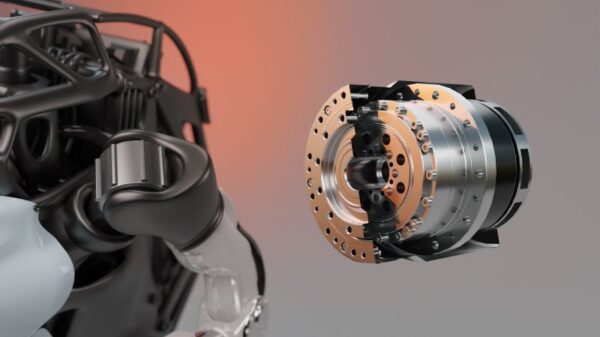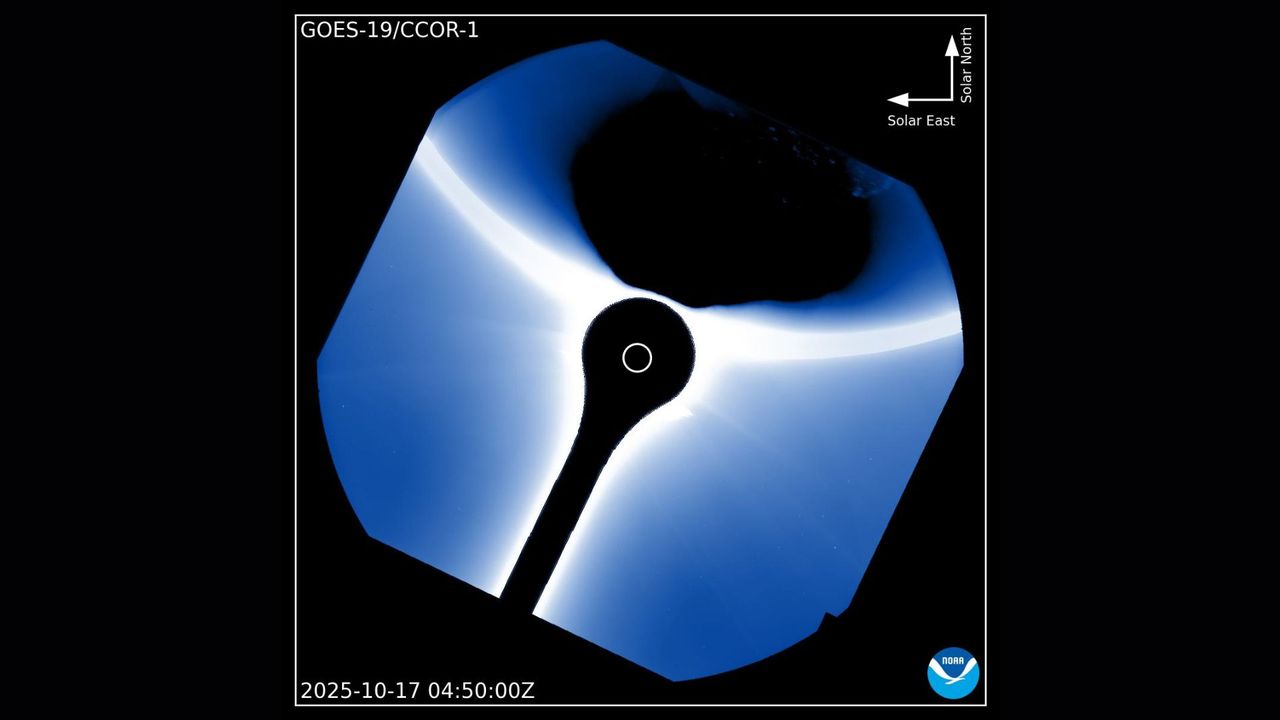A remarkable image captured by the U.S. National Oceanic and Atmospheric Administration’s (NOAA) satellite, GOES-19, recently revealed Earth unexpectedly appearing in a view of the sun. Taken by the satellite’s CCOR-1 coronagraph, the photograph shows our planet silhouetted against the sun’s outer atmosphere, known as the solar corona.
About GOES-19 and Its Mission
GOES-19 is the latest addition to NOAA’s Geostationary Operational Environmental Satellite series. Launched in 2024 and declared operational in early 2025, this advanced satellite continuously monitors Earth’s weather patterns and the surrounding space environment. Stationed approximately 22,000 miles (or 36,000 kilometers) above Earth’s equator, GOES-19 maintains a geostationary orbit, allowing it to remain fixed over specific regions of the planet.
The image shared by NOAA’s Space Weather Prediction Center on the social media platform X illustrates Earth crossing the view of the coronagraph. The shadow of the planet appears to “photobomb” the solar image, providing a unique perspective on the dynamics of space weather.
The Significance of the Image
Among its many instruments, GOES-19 features CCOR-1, which captures real-time images of the solar corona. This region, typically invisible to the naked eye, emits faint light and extends millions of miles into space. The corona is crucial for understanding phenomena such as coronal mass ejections (CMEs), which can release vast amounts of plasma and magnetic fields into the solar system. When directed toward Earth, these bursts can disrupt satellites, power grids, and communication networks.
Although the image may resemble a casual snapshot, it demonstrates the effectiveness of CCOR-1. The instrument is designed to detect faint solar structures, even when a bright object like Earth enters its field of view. Additionally, this unintentional appearance helps scientists calibrate the instrument, providing insights into how CCOR-1 manages stray light, reflections, and the brightness contrast between celestial bodies.
For those interested in delving deeper, further information about coronagraphs and the role of weather satellites in monitoring space weather is available through NOAA.






































































